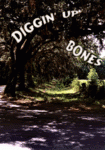Search results
Google Books and Your Family Tree
February 6, 2012 by ramona
Filed under Articles, Genealogy Technology, Introduction to Genealogy, Latest News, Lesson 8 Articles
 Google Books can be an amazing resource for beginning genealogists. Whether you are looking for information specific to your family tree, something related to a current research interest like military records or general information on genealogy; Google Books is a good place to start.
Google Books can be an amazing resource for beginning genealogists. Whether you are looking for information specific to your family tree, something related to a current research interest like military records or general information on genealogy; Google Books is a good place to start.
To Find Google Books:
- Go to Google.com and hit the little arrow at the top of the toolbar next to “more”
- In the drop down menu click on “Books”
You should now be on the Google Books, search page.
Search Google Books for Genealogy Treasures
It is easy to find books with Google Books; all you do is enter a keyword into the search box. For example:
When I enter “Military Records”, I get about 1,860,000 results, including:
· Military records: Confederate soldiers, 1861-1865
· U.S. military records: a guide to federal and state sources
· Army Records: A Guide for Family Historians
A general search under “Genealogy” brings about 6,750,000 results, including:
· Genealogy Online For Dummies
· The Online Genealogy Handbook
· Genealogy: a practical research guide
Of course, you can alter your search terms to be location specific or even surname specific.
Using Google Books to find a specific ancestor can really pay off as well. Using my ancestor “Marin Boucher”, I find the following:
The Boucher heritage
books.google.caLaurent Boucher – 1999 – 298 pages – Snippet view
This map also shows that Marin Boucher and two of his sons, Francois and Jean- Galleran, had settled near the present village of Chateau-Richer about seven miles from Quebec City: It is worthwhile noting that many of the colonists whose …
“200” family trees: from France to Canada to U.S.A.
books.google.ca – Snippet view
The above Jean Galeran Boucher was the son of Marin and Perinne Mallet who were married around 1628 at St-Langis-les-Mortagne,France. Marin Boucher’s parents were unknown but he came from Mortagne.He was the brother of Jeanne who was …
If you want to see information about a book listed just click on the title of the book. By doing this, you may also find (if the author has given permission) “snippets”. Snippets are areas of the book specifically related to you search terms. Snippets will tell you how many pages in the book match your search terms.
When you find a book you are interested in you can select the “Buy this Book” option or “Find this book in a library” and be directed to a library where you may borrow it. Sometimes, if you are lucky the book you find may be out of copyright and available free online.
Another search option you can try with Google Books is “Full View Books”. Select this option when you only want to search for books you can fully view online.
Genealogy Beginner encourages you to try using Google Books for your family tree research. If you find any amazing books, please share your discoveries with other genealogy beginners on the Discovery Panel forum.
Image Credit: someofthisandthat via Photobucket
Genealogy, Adoption and DNA
January 31, 2012 by ramona
Filed under Articles, Latest News

On January 23, 2012, the New York Times released a story titled “With DNA Testing, Suddenly They Are Family”. The story written by Rachel L. Swarns, is the tale of an adoptee who used DNA testing to find living blood relatives.
In her story, Swarns writes, “A growing number of adoptees, now in the thousands, are turning to DNA testing companies in hopes of piecing together the puzzles of their beginnings.”
The subject of the story Khrys Vaughan, tells how at age 42 she discovered that she was adopted, a revelation that made her question her identity. Having seen an advertisement for DNA testing she signed up and five weeks after submitting her samples, she was informed of her results. Results, which came with the names and e-mail addresses of distant cousins, many who had submitted their DNA samples for genealogy research. This month Mrs. Vaughan met a new third cousin for the first time.
Of the experience, Mrs. Vaughan states, “Somebody is related to me in this world,” she said. “Somebody out there has my blood. I can look at her and say, ‘This is my family.’
With genetic testing growing in popularity and the costs for testing dropping, more and more people are opting to take this route; both for genealogy research and as adoptees hoping to identify blood kin. Additionally, DNA testing companies are beginning to amass enough data that they are now able to help adoptees find family.
Some adoption experts criticize the practice stating that quite often; the relationships are somewhat of a stretch. Adoption expert, Elizabeth Bartholet of Harvard Law School is on record stating,
“Adoptees would be better served by nurturing the relationships they already have.”
Many comments left on this story by adoptees, show strong disagreement with Ms, Bartholet’s opinion.
Visit With DNA Testing, Suddenly They Are Family to read the full article and comments.
Image credit: tahbasco Via Photobucket
Leading Genealogy Sites Eliminate Records
December 29, 2011 by ramona
Filed under Articles, Latest News
 Two major genealogy research services ceased posting Social Security numbers last week after receiving serious complaints from the public.
Two major genealogy research services ceased posting Social Security numbers last week after receiving serious complaints from the public.
Genealogy and Privacy Violations
The cause, complaints of privacy violations by two individuals after the Social Security Administration falsely listed them as deceased.
Scripps Howard News Service, first to investigate the Social Security’s Database known as the Death Master File discovered the errors earlier this year. During their investigation, Scripps Howard identified 31,931 American citizens incorrectly recorded as deceased
Genealogy Sites Involved
Genealogybank.com was the first to stop, having made the decision to “err on the side of privacy” as stated by Daniel Jones, vice president of consumer products for Newsbank.com; parent company to Genealogybank. Shortly afterward, at the request of federal lawmakers Ancestry.com followed suit.
What Family Tree Site Will Be the Next to Fall?
The Church of Jesus Christ of Latter-day Saints who operate FamilySearch.org. Along with other genealogy research sites, have also received requests to stop granting access to the full Death Master File.
Erik Hawkins, representative for FamilySearch.org stated in a story released by Scripps Howard News Service 12/15/2011 “We are looking into how this matter can be resolved.”
For the full story: http://public.shns.com/content/genealogy-sites-remove-social-security-numbers-deceased
Genealogybeginner.com wants to know what our readers think. How does the loss of SSDI records affect genealogy research? Join us on the forum, Genealogy News and Events and weigh-in with your opinion.
Image credit: tahbasco Via Photobucket
Genealogy Standards: You Need to Know Now
December 17, 2011 by Sherri
Filed under Articles, Genealogy Standards & Guidelines, Introduction to Genealogy, Latest News, Lesson 1 Articles
 You have found some intriguing information on an ancestor that has you very excited.
You have found some intriguing information on an ancestor that has you very excited.
It is a significant event
Gives dates and places
May even promise to break through a brick wall
What it does not have is a proper source citation. Do you believe it or not?
I share the following story with you to demonstrate why learning to use and strictly follow the Genealogy Standards and Guidelines may be the most important lesson you learn.
Here is why Genealogybeginner.com’s Lesson 1 – The Big Five Genealogy standards and guidelines is so important!
Genealogy Believe it or Not
While working on collecting documented evidence to use in a biography for an ancestor. I ran across a web page that claimed to place my ancestor in North America 15 years earlier than previously thought. It also connected him with a notable historic person.
There are two reasons why this information is both extremely exciting and misleadingly dangerous.
Family Tree Excitement
- The source had the BDM information correct
- Another tie to this notable person and my ancestor has been well documented in government sources.
Ancestors in Danger
These two facts make the information I found plausible. However, I have not run across this particular event in any known primary or secondary source.
So, although excited to find this reference, the first thing I did was look for a source citation for the event. Sadly there was none listed, in fact there were no source citations listed for anything. Far too often this is the case and far too often misleading information is assumed to be fact by trusting, inexperienced ancestor hunters.
A Caution for the Genealogy Beginner
1. Indexes, databases and published family trees
Indexes, databases and published genealogical works are wonderful research helps when used correctly. They are not EVER to be considered sources under any circumstances. Indexed information, although associated with a primary source record, is not the record itself.
2. If you can not document the source it is simply genealogy fiction
When recording your information provide a complete and full citation of your sources. Without this information all the work you have done is simply fiction.
Everything you need to know about genealogy standards and guidelines is available to you right here at genealogybeginner.com.
Subscribe today for your need to know lesson on Genealogy Standards & Guidelines
Image credit: haleyb412 via Photobucket
Big Changes at the U.S. Social Security Death Index
November 18, 2011 by ramona
Filed under Articles, Latest News
![]() Created in 1936, the Social Security Death Index (SSDI) is the repository holding records of individuals who have lived and died in the US. This resource has been of great importance to many persons interested in researching their family tree. However, in more recent years this free public searchable database has also been misused by those with less honorable intentions. In fact, the recent changes come about due to the stolen identities of deceased infants, from records that were believed to have been accessed at the SSDI public data base. For this reason the SSDI has made changes that will negatively affect genealogists and family history researchers with U.S. interests.
Created in 1936, the Social Security Death Index (SSDI) is the repository holding records of individuals who have lived and died in the US. This resource has been of great importance to many persons interested in researching their family tree. However, in more recent years this free public searchable database has also been misused by those with less honorable intentions. In fact, the recent changes come about due to the stolen identities of deceased infants, from records that were believed to have been accessed at the SSDI public data base. For this reason the SSDI has made changes that will negatively affect genealogists and family history researchers with U.S. interests.
About the changes
Death records from the Public Death Master File (DMF) will no longer be accessed and added to the database effective November 2011. In addition the SSDI is also removing 4.2 million of its 89 million records and will be decreasing new records added by about 1 million per year.
The new records added will come from family members, funeral homes, hospitals, Federal agencies, postal authorities and financial institutions. It is solely state death certificates that will no longer be added. The full notice from the NTIS reads:
IMPORTANT NOTICE: CHANGE IN PUBLIC DEATH MASTER FILE RECORDS
We receive Death Master File (DMF) data from the Social Security Administration (SSA). SSA receives death reports from various sources, including family members, funeral homes, hospitals, and financial institutions.
Q: What change is SSA making to the Public DMF?
A: Effective November 1, 2011, the DMF data that we receive from SSA will no longer contain protected state death records. Section 205(r) of the Act prohibits SSA from disclosing state death records SSA receives through its contracts with the states, except in limited circumstances. (Section 205r link – http://www.ssa.gov/OP_Home/ssact/title02/0205.htm)
Q: How will this change affect the size of the Public DMF?
A: The historical Public DMF contains 89 million records. SSA will remove approximately 4.2 million records from this file and add about 1 million fewer records annually.
REMINDER: DMF users should always investigate and verify the death listed before taking any adverse action against any individual.
Genealogist may still be able to research data from their state vital statistics offices; this however will mean more work as these records are not indexed.
How do you feel about these changes? Join us over at the https://www.genealogybeginner.com/community/genealogy-news-events/changes-at-the-ssdi#p54 forum for more discussion.
A Military Records Search Strategy for Your Family Tree
November 11, 2011 by ramona
Filed under Articles, Genealogy Military Records, Genealogy Records 101, Public Records
 Having an ancestor who served in the military is a source of pride for many families and justly so, making military genealogy a popular avenue of research. Who would not want to delve into the details of their forebear’s military service in order to honor these family heroes? Finding the details of their service however, can be a challenging prospect, especially when it comes to more recent records. To make matters more confusing, the sheer number of online databases can be overwhelming to the genealogy beginner; making it difficult to know where to begin.
Having an ancestor who served in the military is a source of pride for many families and justly so, making military genealogy a popular avenue of research. Who would not want to delve into the details of their forebear’s military service in order to honor these family heroes? Finding the details of their service however, can be a challenging prospect, especially when it comes to more recent records. To make matters more confusing, the sheer number of online databases can be overwhelming to the genealogy beginner; making it difficult to know where to begin.
Having a good step by step strategy for your research will undoubtedly help uncover your predecessors courageous past.
The first step: start with what you know
Your search for military documents is no different than any other type of genealogy research, in that, the first step of any ancestor hunt is starting with what you know. Do you or another family member have any military memorabilia such as discharge papers, medals, photographs, weapons or even uniforms? If so, that is clearly the place to start. Any and all of these things can provide valuable information to help set you on your way to recovering more records needed to put new buds on your family tree.
The second step: focus on your target
Decide on your target. What do you want to find first. This may include educating yourself on the many types of military records available. It is important to know what records you are looking for, before you can start searching for them. Also, note that records may differ for the time frame you are searching, be it the war of 1812, the Civil War or World War II. In addition, the branch of military your family member served in Army, Navy or Coastguard etc, will have some bearing on your search strategy. For instance during the second world record types include:
- World War 2 Personnel Files
- World War 2 Military Unit and Ship Records
- Merchant Marine Records
- Army Enlistment Records
- Draft Records
- World War 2 POW Records
- World War 2 Casualties
- Cadet Nurse Corps
- Internment and Relocation Records
- Civilian Participation at Home
The most important of these records for the beginning genealogist is the record of discharge or “Report of Separation” which is kept in the personnel files. A Report of Separation is generally a one page document that contains all of the information concerning your ancestor’s service such as rank, dates of service, service number, unit, battles and campaigns as well as any decorations and awards received.
Step three: identify your resources
Online
Online genealogy sites are fast becoming the main resource for genealogists researching military records. With the advent of digitized records they are available from both subscription sites as well as archival collections held by government agencies. Whether you choose to use a paid resource, which is quite often more convenient and often gives faster results due to their searchable databases, or conduct a manual search of archived records, may depend on the time and money you have to spend. One of the more prominent online sites for military genealogy is Fold3.com. Formerly Footnote.com, Fold3 is owned by the same company as ancestry.com. The company has decided to use Fold3 exclusively as a site for searching military records.
Government archives are your best pick if you are working within a budget from your home computer and have the time to conduct a manual search. It is important to note that not all government archives have available records online; the availability of records can vary with the country you are searching. As a last word and this can be important to your genealogy budget, before you pay for a subscription, check with your local library. Many libraries (both local and university libraries) have free in-library access to ancestry.com.
Hard Copy
Hard copy records are a resource that should never be overlooked. Searching for hard copy records requires a little footwork but can present a huge pay-off; the main source for these record types includes state and provincial archives. It also pays to check with historical and genealogical societies as they frequently have military record collections. One last resource that bears mentioning is newspaper archives held by most libraries on microfilm. Local newspapers are rich with family history information as they often contain stories of departing and arriving local soldiers, in addition you may also find mentions of a soldier’s letter home.
Final Step: analyze your findings
Once you have collected the records you have set out to find, analyze them closely as they may lead you to your next search target. For example, a copy of your great grandfather WWII discharge papers will tell you of any awards or honors he received. This may lead to questions about why, when and how he received them. If a Purple Heart Medal is listed, this tells you he was wounded or killed in service, a Silver Star indicates valor in the face of the enemy. This certainly enriches your family history in addition to helping you understand what kind of person he was.
A good genealogy community can be a great boon in helping to sort out what you need to know in order to make a strong start. If you need some help in this area, join us on the Discovery Panel forums for further discussions on military records
Genealogy for Halloween: A Treat from Genealogybeginner.com
October 27, 2011 by ramona
Filed under Articles, Latest News
 Genealogy and Halloween go together like “Trick or Treat”. After all, who is more interested in the spirits of the past than your average ancestor hunter. If you needed any more proof of that, you would not have to go farther than a visit to some of the preeminent genealogy sites and blogs, such as GeneaBloggers or Genealogy.com.
Genealogy and Halloween go together like “Trick or Treat”. After all, who is more interested in the spirits of the past than your average ancestor hunter. If you needed any more proof of that, you would not have to go farther than a visit to some of the preeminent genealogy sites and blogs, such as GeneaBloggers or Genealogy.com.
Here is a look at how the genealogy community is celebrating this holiday in spooktacular style
A Halloween themed Radio show
Set your calendar for Friday October 28 to catch “Haunted by Ancestors – A Genealogy Halloween Special!” presented by GeneaBloggers at: http://www.blogtalkradio.com/geneabloggers/2011/10/29/haunted-by-ancestors–a-genealogy-halloween-special. The show will feature professional genealogist Henry “Hank” Jones Jr., who will be speaking on his book “PSYCHIC ROOTS: SERENDIPITY & INTUITION IN GENEALOGY”. Other guests included in the October 28 radio show are Paul J. Bunnel, genealogist slash certified Ghost Hunter and Melinde Lutze Byrne, vice president of the American Society of Genealogists and former skeptic. The show is moreover proclaiming a mystery guest, someone who will make an important announcement asserted to be of great interest to the genealogy community. GenealogyBloggers Radio certainly promises an entertaining evening of bone digging fun.
Historic Halloween pranks
Over at Genealogybank you can find an entertaining post titled “Halloween ‘Tricks’—One Subtle, the Other a Blast”. Offering an interesting historic look at the “trick” side of this well-loved celebration, Genealogybank has tracked down a couple of old newspaper articles based on the past hijinks of Halloween tricksters. Sharing some of the fun genealogists can find in searching newspaper archives and giving us a very instructive read.
From the graveyard
A Spooky Genealogy: A Cemetery Find is what you will find when you go Trick or Treating at the Ancestor chase Blog. A visit to this site will give you the chills as they recount the tale of a strange and unexpected genealogy discovery. One that was perchance initiated from beyond the grave, by those lost from the family tree record.
Genealogy.com is joining in the Halloween amusement with a fantastic article on cemetery searches. The article covers Getting Started with Cemetery Records as well as Cemetery Records and Gravestones. In addition to this wonderful information, there are some great tips on finding additional sources for your cemetery search.
Show of your generations
MyHeritage.com is holding a Halloween Family Photo competition, what they are looking for are creative and original photos of families dressed up in their Halloween best. Uploading your favorite family Halloween picture, old or new, onto their Facebook page could win you a premium subscription at MyHeritage.com. Contest entry ends November 1, 2011. For more information, give them a visit.
Story time
If spooky stories of generations past are what you have in mind this Halloween, then Ancestry.com should be on your list with a message board dedicated solely to scary ancestral tales.
In the news
A week of Family Tree Halloween merriment would not be complete without this wonderful headline maker from The Associated Press.
Prince Charles linked to Dracula
“LONDON The truth is out: Prince Charles is related to Vlad the Impaler.
The heir to the British throne says he is related to Vlad the Impaler, the cruel 15th-Century Romanian warlord who helped inspire Bram Stoker’s 1897 vampire novel “Dracula.”
For the complete story visit: http://www.thespec.com/whatson/celebrity/article/615644–prince-charles-linked-to-dracula
Wrap up
Of course, this could not end properly without a Samhain Salute from Genealogybeginner.com
Have a Safe and Happy Halloween!
Free Genealogy Search: 1940 US Census Returns Go Live April 12, 2012
October 12, 2011 by ramona
Filed under Articles, Latest News, Public Records
 A visit to the National Archives genealogy resources page evokes a subtle sense of excitement, as the counter ticks down to the April 2, 2012 release of the 1940 US census returns. These important records will be accessible through public access computers at Nara facilities on a national level. They can also be conveniently accessed through the internet from your personal computer. Better yet, it is free of charge. The 1940 census is the 16th Federal Population Census of the United States and the census day was April 1.
A visit to the National Archives genealogy resources page evokes a subtle sense of excitement, as the counter ticks down to the April 2, 2012 release of the 1940 US census returns. These important records will be accessible through public access computers at Nara facilities on a national level. They can also be conveniently accessed through the internet from your personal computer. Better yet, it is free of charge. The 1940 census is the 16th Federal Population Census of the United States and the census day was April 1.
The questionnaire for this census was a double-sided form that afforded space for 40 entries. There were also two additional lines for the five percent sample questions.
New questions added
Many of the questions answered on the 1940 returns are customary to census questionnaires. However there are several new questions added that are likely to provide clues of great value to your genealogy research. For instance, the 1940 census asks for the name of the person providing the information as well as the birthplace of that person’s mother and father.
Some other interesting questions asked on the 1940 census include:
• Whether the home of the enumerator is owned or rented, as well as the value of the home
• Whether there are any persons currently absent from the household
• Highest completed level of education
• It asks for a specific profession such as salesman, music teacher or laborer etc
• Whether the person is a veteran of the US military or the wife, widow or child of a veteran
• The earliest language spoken at home during childhood
Of a woman’s marital status it asks for the number of times a woman has been married, her age at the time of her first marriage and the total number of children born to her. (Excluding stillbirths)
Research strategies
For those of you who are already eagerly anticipating your research of the 1940 returns. Here are a few strategies to help you get the most out of your investigation. At the top of this list is the knowledge that you will not be able to conduct searches by name, as there will be no name index available when it first opens up. To locate your ancestor, you are going to need their address as well as the enumeration district in which it was located. It may be a good idea to start gathering some of this data now.
In order to find the addresses of the forebear(s) you will be researching. You can start looking them up in city directories. These directories are usually available in your local library, so initiate your inquiry there. If you have already found your predecessors in the 1930 census, use it as a starting point for your 1940 census searches. Another excellent resource for tracking down locations is the WWII draft records.Should you still be having trouble locating the enumeration districts you need? Try the 1940 enumeration district, census maps, as they should contain the district numbers.
It is important to note, that maps may not be available for all towns; in this case, looking at county maps is the next step.
Links to enumeration district finding aids:
• Geographic Descriptions of Census Enumeration Districts
• Enumeration District Maps
• 1940 City Directories at NARA
• Use Stephen P. Morse’s Search engines to locate Census Enumeration District Numbers
This information should get you off to a great start. However, should you want a little more assistance there is a very informative guide available at the NARA Website. Before you leave, grab the table for deciphering the codes used in the 1940 census. Print it out and keep it with your preparation materials for an organized search later. This will give you plenty to do while waiting for April 2, 2012 to arrive.
For more information on this and other great genealogy resources visit: National Archives and Records Administration.
October is Family History Month: Host a Family Tree Party
October 9, 2011 by ramona
Filed under Getting Started
 In October, genealogy is the buzzword. Why, because October is Family History Month and it seems that everyone is on a mission to honor their ancestors. Genealogy internet sites are holding contests, sweepstakes and giveaways, genealogy bloggers are busily posting, Twitter is a-tweet with the news and Facebook is getting frantic. There is no better time to get together with your relatives and shake the branches of your family tree. So what is all of the fuss about? It is about the natural human curiosity we all share in wanting to know everything we can about our heritage.
In October, genealogy is the buzzword. Why, because October is Family History Month and it seems that everyone is on a mission to honor their ancestors. Genealogy internet sites are holding contests, sweepstakes and giveaways, genealogy bloggers are busily posting, Twitter is a-tweet with the news and Facebook is getting frantic. There is no better time to get together with your relatives and shake the branches of your family tree. So what is all of the fuss about? It is about the natural human curiosity we all share in wanting to know everything we can about our heritage.
Perhaps, it is mostly about family pride and honoring the ancestors who made great sacrifices, so that we may enjoy the lives we have today.
Family History Month is the perfect time to connect with your family members and host a Family Tree party. To throw a Family Tree Party all you need to do is, ask family members to bring a special family heirloom; it could be a photograph, newspaper clipping, recipe or simply a favorite memory about a family member. Sharing the stories from your common past can help bring present and future generations closer together, while at the same time preserving your heritage. For relatives that are more geographically distant try to arrange for them to attend through a group Skype call.
While you have everyone together, you have the opportunity to:
With everyone together, this is the ideal time to update your family tree. Have there been any births, marriages or deaths since the last update? What about occupation changes, education news or recent research that needs to be added?
Does your family have any traditional dishes, what about grandma’s homemade bread or Uncle Joe’s Horseradish sauce? Hosting a Family Tree Party may be the opportunity you have been waiting for to gather up these delectable family treats and finally start that family cookbook project.
Profile a family member
Profiling a family member is an excellent way to enrich your family history one forebear at a time. Is there someone in your family tree who is famous or infamous? Is there a mystery to be solved? Every ancestor has a story to tell, by profiling an individual, you give yourselves the ability to fully flesh out those stories that define family history.
With everyone together, it is a good time to discuss creating a family Facebook page. Family Facebook pages are a wonderful way to stay in touch, share information and work together on your family history projects. You can use them to share photographs, documents and the latest news. Family Facebook pages are free; they are also easy to set up. Another bonus is that they are a great way for others researching your family name to find you.
Do not forget to check out some of the leading genealogy websites and take advantage of their Family History Month celebrations. Here are a few of the special offers and activities available throughout Family History Month.
- Honor Family History Month with “The Amazing History of You“: ProQuest and Ancestry.com
- Great genealogy supplies giveaway and free Webinars: Family Tree Magazine and Family Tree University
- A one-month Geni Plus account giveaway: Geni
Family History Month is the perfect occasion to renew your genealogy research, or get it started at genealogybeginner.com. It is most certainly a time to remember your family, past and present.
“We all grow up with the weight of history on us. Our ancestors dwell in the attics of our brains as they do in the spiraling chains of knowledge hidden in every cell of our bodies”. ~Shirley Abbott
Genealogy or Family History?
October 2, 2011 by ramona
Filed under Articles, Genealogy for Beginners, Getting Started in Genealogy, Introduction to Genealogy
 For many beginning genealogists, the line between the concrete facts of genealogical research and the personal lore of family history are easily blurred. This article by Genealogy Beginner’s resident genealogist, Ramona Hartley clearly demonstrates the difference between the two related but separate fields of study. Do you know the difference between genealogy and family history? When you are a beginning genealogist; taking those first tentative steps in researching your ancestry, it can be difficult to distinguish the difference between them.
For many beginning genealogists, the line between the concrete facts of genealogical research and the personal lore of family history are easily blurred. This article by Genealogy Beginner’s resident genealogist, Ramona Hartley clearly demonstrates the difference between the two related but separate fields of study. Do you know the difference between genealogy and family history? When you are a beginning genealogist; taking those first tentative steps in researching your ancestry, it can be difficult to distinguish the difference between them.
The terms genealogy and family history refer to two separate but equally significant approaches to exploring your roots. The fundamental difference between the two methods lies in the sources of information used to conduct the research. These sources consist of primary, secondary, and tertiary information.
Genealogy
The study of Genealogy refers to the fact based inquiry into your ancestry. It is the concrete process of searching for your genetic origins by gathering and documenting the names, dates and locations of your predecessors. Genealogy requires adherence to the precise information presented within public record to provide irrefutable evidence of your lineage.
A genealogist’s tools are the source materials such as Statutory Index Records for marriages, births, deaths, and baptisms, although at times family bibles and Census Records can be primary sources. To correctly conduct genealogy research you would want to use only primary source information, which means using any record showing a first hand account of an event and containing the signature of a witness.
Family History
Family History refers to the study of the unique details and personal events in your ancestor’s lives; it is their story as told by you, their descendant. Family history research fleshes out the full account that gives life and character to your family tree by including the private details of your generations past; these being the fine points of lives lived that are not found solely within public records. A family historian can use secondary and even tertiary information such as, old photographs, diaries, letters and family lore.
Tying it together
That is not to say that you can not use primary sources for family history research. The study of family history often requires the need to read between the lines of public documents and dig a little deeper to find the tale that lies within. Some truly wonderful opportunities for family history stories are hidden in genealogical data.
Using a fantastic clue found in an Old Parish Record, I will show you how the two can work together.
Genealogy Data + the Family Historian = A Great Story
OPR Extract:
Parish of Carstairs, County of Lanark. Dated May 2nd. 1790
“May 2nd, this day Alexander Gibson in Longflush and Christian Weir had a daughter {Begot in Fornication}. Baptized, Named Janet Gibson.”
The Family History element
This baptismal record from Scotland 1790, tells us that the child being baptized was “begot in fornication”. Even so, both father and mother were listed in the parish record.
Sensing a good family history story, I researched what the term “Begot in Fornication” would have meant to the lives of these individuals in 1700’s Scotland.
What I found was that, the community was very narrow-minded in those days, quick to bring transgressors before the sessions. In this case the father of the child came forward and admitted his liabilities. Due to this he was listed in the record even though he did not marry the mother. The parents of the child being from “good church going families” would have been brought to task publicly and admonished for their sin, this over a period of three Sundays at normal services. Having then been deemed publicly humiliated they would be, so to speak, brought back into the fold and the child baptized.
Wrap up
The short and sweet answer to the question; do you know the difference between genealogy and family history is… You are a genealogist when: you are searching for and documenting records from primary sources and your concern is for factual, proven accounts of births, baptisms, marriages and deaths. You are a family historian when: you are using those facts in addition to reported events that although probable, may not be substantiated by first hand account in the available records; for the purpose of telling the story of your family’s unique and very personal past.
No matter what your method, don’t be surprised if when rediscovering their lives’, you gain a better understanding of your own.
Article Source: http://EzineArticles.com/?expert=Ramona_Hartley
